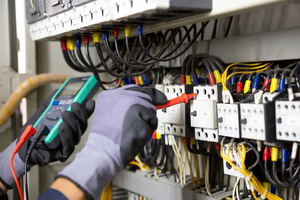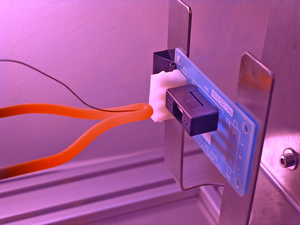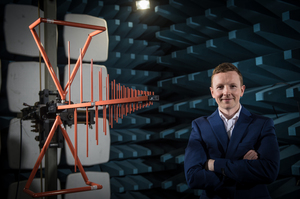
 |
Charlotte Stonestreet
Managing Editor |
| Home> | MACHINE BUILDING & ENGINEERING | >Machinery | >Six steps to electrical safety certification |
Editor's Pick
Six steps to electrical safety certification
16 April 2025
Leigh Picton shares insights into navigating the complex world of electrical safety certification using a streamlined six-step process

FOR ANY electrical product entering the UK, European or global markets, obtaining safety certification isn’t optional. Certified safety ensures compliance with national and international standards, providing both consumers and retailers with peace of mind about a product's reliability and safety. Furthermore, it protects manufacturers from reputational risks, costly failures, and possible legal complications.
Why certification matters
Electrical safety certification offers more than regulatory compliance; it underpins trust and credibility for both manufacturers and products. For consumers, certification is a guarantee that products meet stringent safety standards. For manufacturers, it reduces the risk of failures, protects their reputation, and provides smoother access into competitive global markets. However, the certification process can feel complex and daunting due to varying safety requirements across regions.
This is where an experienced and trusted certification partner, such as Kiwa, makes a difference. Our team’s expertise helps manufacturers efficiently address safety requirements through a clear, step-by-step pathway to compliance.
Here’s a breakdown of the six critical steps to electrical safety certification success:
1. The initial consultation
The process begins with an initial consultation, where manufacturers submit a Request for Quotation (RFQ) to a certification provider. This step defines the exact scope of the testing and clearly specifies the countries or regions where the product will be launched.
From there, the certification provider develops a customised testing roadmap. This roadmap outlines key milestones, resources required, and estimated costs. Engaging with a trusted partner early allows for better resource allocation, a clearer understanding of challenges, and a defined route towards certification.
2. Submitting product details and documentation
Once the scope and costs are settled, manufacturers submit a test sample of their product along with essential documentation, including:
- Manufacturer information and manufacturing site addresses
- A detailed product description
- Documentation for each component used in the product.
At this stage, every component, with a particular focus on safety-critical parts, must meet local and international regulations. Obtaining certifications for these components at the earliest opportunity is crucial to avoid delays further down the line.
3. Rigorous testing and assessment
Once the product and documentation are received, the certification provider begins testing the product against International Electrotechnical Commission (IEC) standards along with specific requirements for target markets.
Testing ensures compliance with both global standards and local regional regulations. For efficiency, manufacturers should look to work with a provider equipped to conduct all testing in-house. Dedicated facilities and experienced engineers can significantly reduce turnaround times while maintaining the highest standards of accuracy.
If any issues arise, manufacturers are informed promptly, enabling swift resolutions. Transparency and ongoing collaboration between manufacturers and certification bodies are critical during this phase. A well-communicated process ensures clarity and keeps the project on track.
4. Feedback and resolution
Following testing, the certification provider delivers a "findings letter" identifying any outstanding issues that require manufacturer attention. Promptly addressing these recommendations minimises delays in the overall certification process and ensures compliance.
Whether adjustments involve modifying components or refining documentation, collaboration during this stage ensures the product meets all safety requirements before progressing further.
5. Issuing the CB Test Certificate and Report
After all compliance issues are successfully addressed, the certification body issues a CB Test Certificate and Report. These documents are crucial in securing access into global target markets.
CB certification allows manufacturers to bypass redundant testing by demonstrating compliance with international standards, saving time and cost. However, regional variations might require additional certifications. For example, products entering the USA often need an NRTL (Nationally Recognized Testing Laboratory) mark.
At Kiwa, collaboration with global partners streamlines this step, ensuring seamless progress into specific markets while avoiding unnecessary duplication of processes.
6. Product launch
With certifications in hand, manufacturers are ready to launch their products confidently. They can rest assured that their offering is safe, compliant with global standards, and market ready.
Skipping proper certification presents many critical risks, as it exposes both consumers and manufacturers to potential harm, reputational damage, and costly legal ramifications. On the other hand, collaborating with trusted certification providers safeguards all parties and facilitates smoother product launches.
A streamlined certification journey
With our extensive experience in product safety certification, Kiwa is a trusted partner for manufacturers aiming to meet global standards efficiently. Offering services such as the IECEE CB scheme and supported by UK-based Certified Body Testing Laboratories (CBTLs), our team ensures a seamless process. Our global network minimises unnecessary testing for different regions, enabling manufacturers to expedite market entry with confidence.
Navigating electrical safety certification may seem intimidating, but a clear and structured process makes it achievable. By following the six-step pathway and partnering with an expert certification provider, manufacturers can ensure their products are compliant, safe, and globally trusted.
Leigh Picton is laboratory manager at Kiwa
- No related articles listed





















